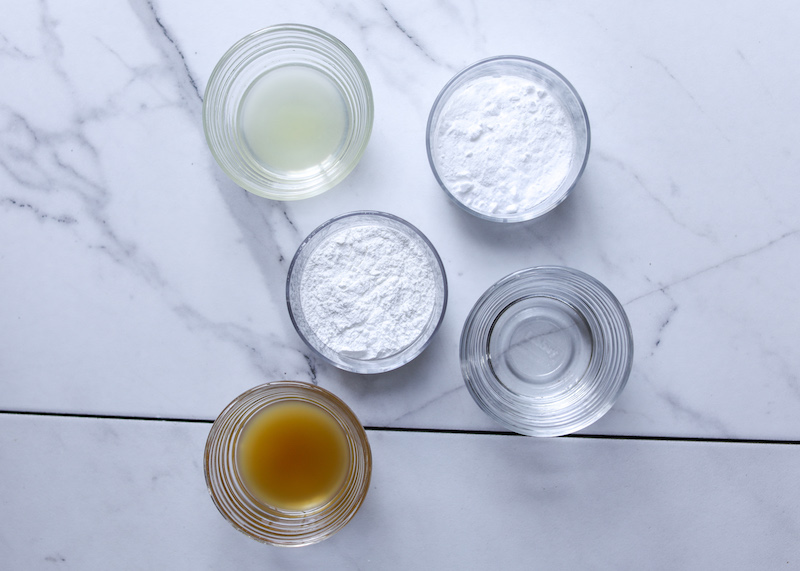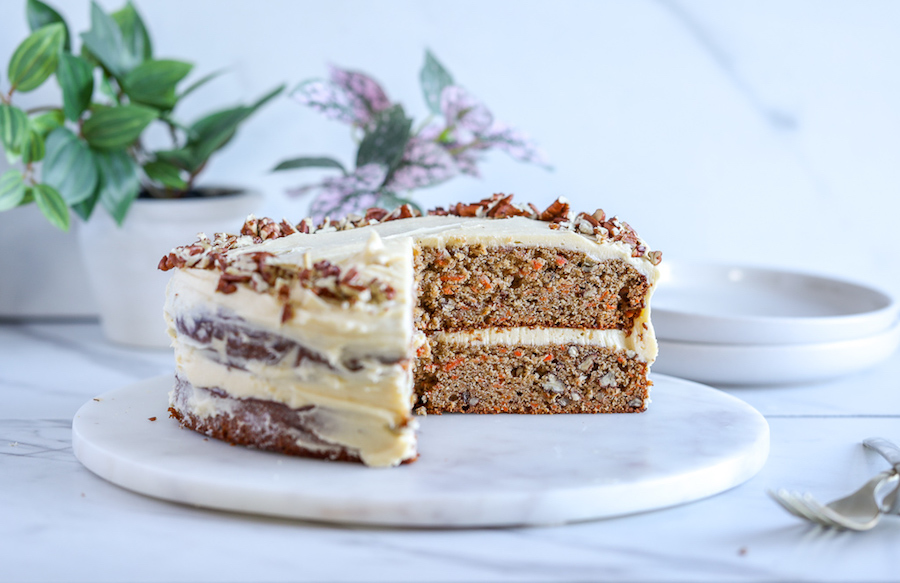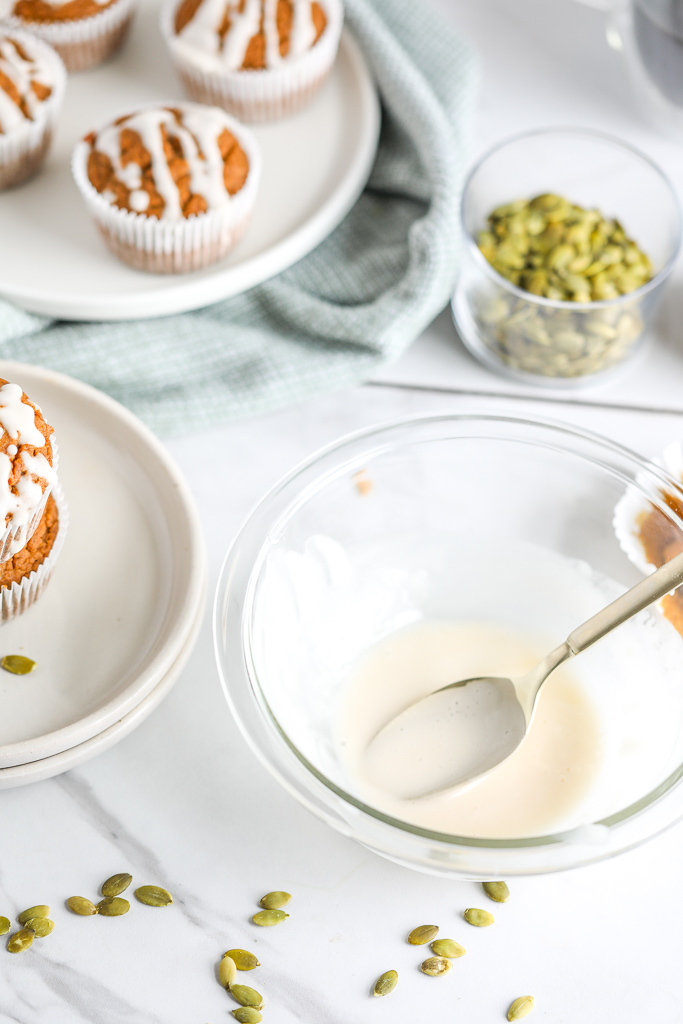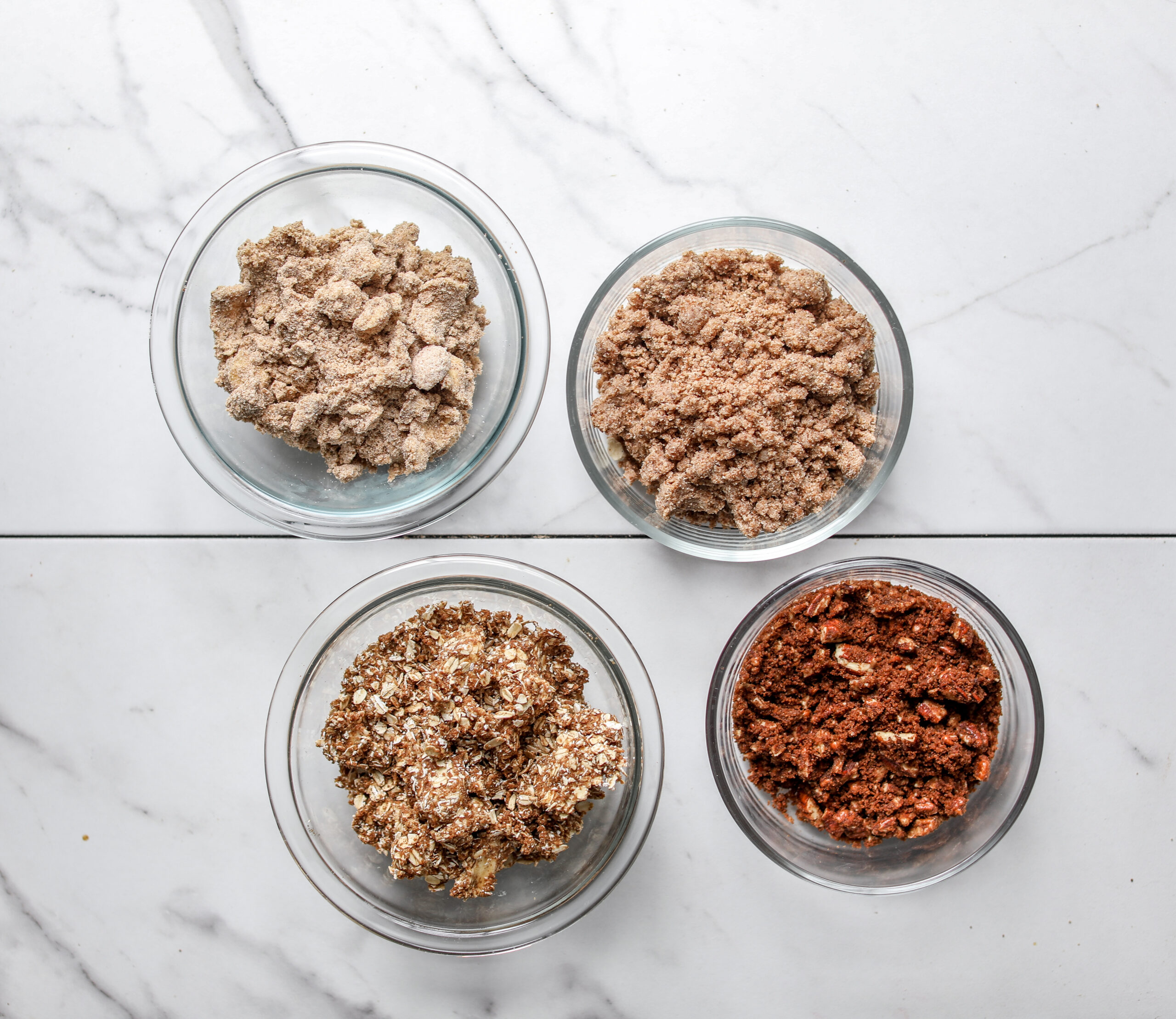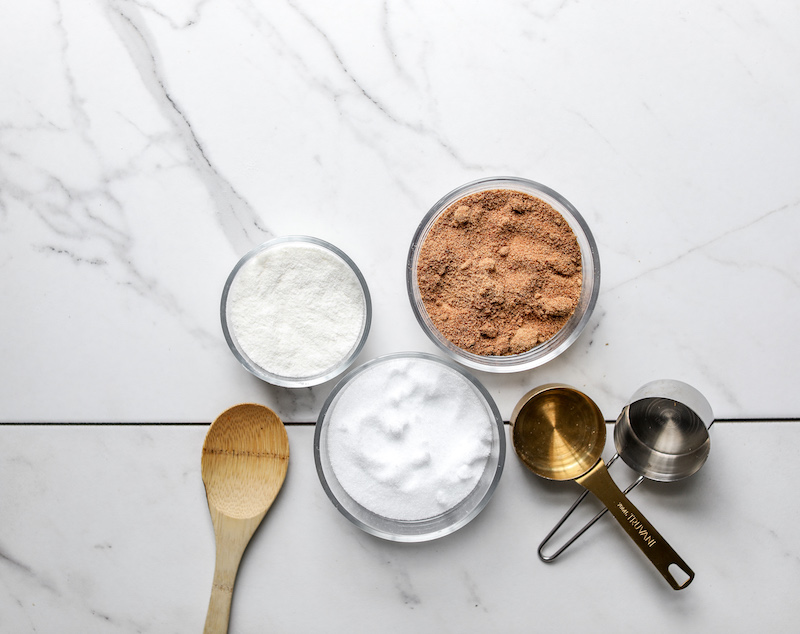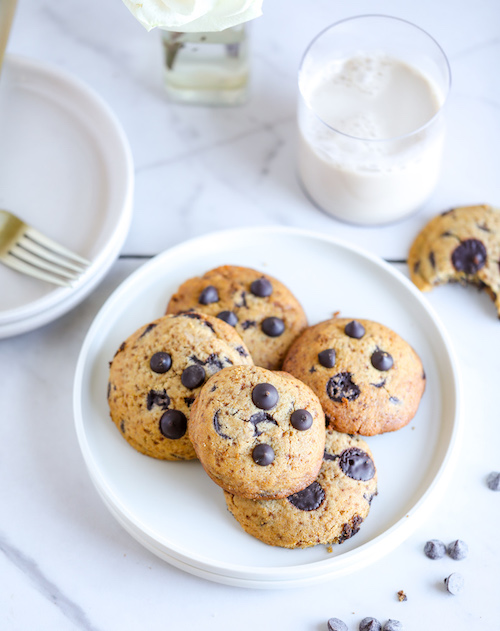I feel like I start many posts with “when I was writing my cookbook…” but it surely was a springboard to so much of the subject matter I post about Healthified Baking. It was an experience that taught me so much, and I think that was the hardest I have ever worked on something, and I am so proud how it all turned out. Better yet, I have so much allergen-friendly and plant-based baking science knowledge under my belt, and I continue to realize how much this information needs to be more mainstream.
So what makes gluten-free vegan baking so challenging unique? Compared to conventional baking, the two main ingredients you have to compensate for are eggs and butter. A major question that comes up is how to replicate the taste and texture of yolks, coupled with the creamy, coating effect of butter using purely plant-based ingredients. The use of flax eggs, full-fat coconut milk, and fruit and vegetable purees are all examples of how to achieve desired results which are just as delicious. Along these lines, there are also many recipes that require refrigerating the dough before baking. Given the lack of traditional binders (i.e. eggs, cream, and butter), refrigerating the dough allows the fatty ingredients that are found in these recipes (coconut milk, coconut oil, and nut and seed butters, for example) to solidify and hold everything together. One important thing to note is that many gluten-free and vegan baked goods might not “rise” in the way you are used to. You will notice that many of the recipes call for mixing the coconut milk or almond milk with an acid as one of the initial steps (i.e. a vinegar or citrus juice). This creates a “buttermilk” effect which works with the leavening agent (baking soda and/or baking powder) to encourage rising.
Despite the fact that there will be a difference in rise and shape of a gluten-free vegan baked good compared to its traditional counterpart, it can still be disappointing when you pull your muffin or cupcake from the oven and your efforts have fallen flat (pun intended). I have been experimenting with two of the techniques I mentioned above, varying the leavening agents and rest/chill time, while keeping the vegan buttermilk constant. The results are so interesting, and lead me to look further into leavening agents and acidity in gluten-free vegan baking specifically.

The difference between baking powder and baking soda
In one recipe experiment for example, I used a teaspoon of baking powder with 1/2 teaspoon baking soda. In the other recipe, I used a full tablespoon of baking powder and no baking soda. I wanted to see what the difference would be, and I will do a full recap in a future post. For the time being, this may leave you wondering what exactly are the differences between the two, and what do they do in the baking process? I am so glad you asked.
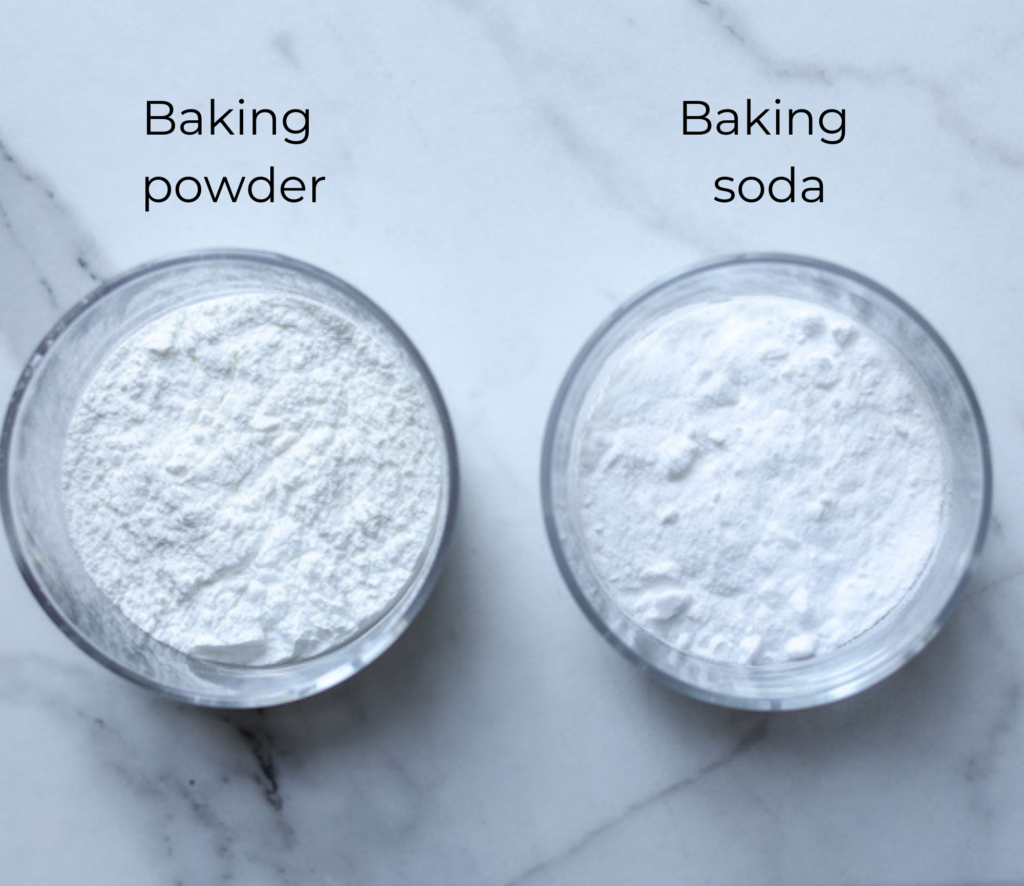
While baking powder and baking soda are both leavening agents, they are not the same thing and can not be used interchangeably. Without getting too technical or make you feel as if you are sitting in your sophomore chemistry class, know these main differences:
Baking powder: contains a combination of ingredients. There is a base (which is usually baking soda), an acid, and a starch. For example, the Rumford brand is comprised of baking soda (sodium bicarbonate), monocalcium phosphate (an acid), and corn starch. Because it is both an acid and a base, it can act on its own without other leavening agents. It can be either single-acting or double-acting. Single-acting baking powder releases gas as soon as it’s mixed with liquid, while double-acting baking powder releases gas both when mixed with liquid and when exposed to heat. This means that chemical reactions occur when beating a batter or dough, and after the baked good goes in the oven. It’s double-acting baking powder that is more commonly used in recipes, as it leads to a more controlled rise.
Baking soda: a pure chemical compound known as sodium bicarbonate. It is an alkaline substance that requires an acidic ingredient (such as vinegar, yogurt, buttermilk, or lemon juice) in the recipe to activate its leavening properties. When it interacts with an acid, it produces carbon dioxide gas, which causes the dough or batter to rise. Unlike baking powder, it is purely a single-acting leavening agent. It will only do what it is supposed to do after coming into contact with an acid. It is four times stronger than baking powder, so 1/4 teaspoon produces the same effect as 1 teaspoon of baking powder.
The importance of leavening agents in gluten-free vegan baking
With the absence of gluten and eggs in gluten-free vegan baking, these recipes rely heavily on leavening agents to achieve desired rise and consistency. It is important to know that because baking soda is more alkaline, it increases the pH levels of a dough or batter more than baking powder. This difference is more relevant when baking with gluten, as the strength of the protein structure is affected by pH: A slightly acidic pH can strengthen gluten formation, resulting in a more elastic and chewy texture (think breads), whereas a more alkaline pH weakens the development of gluten, leading to a softer crumb and consistency (cakes for example). pH does play a role in gluten-free vegan baking, just not in the same was as traditional baking. Here are some key things to keep in mind when using leavening agents in gluten-free vegan baking.
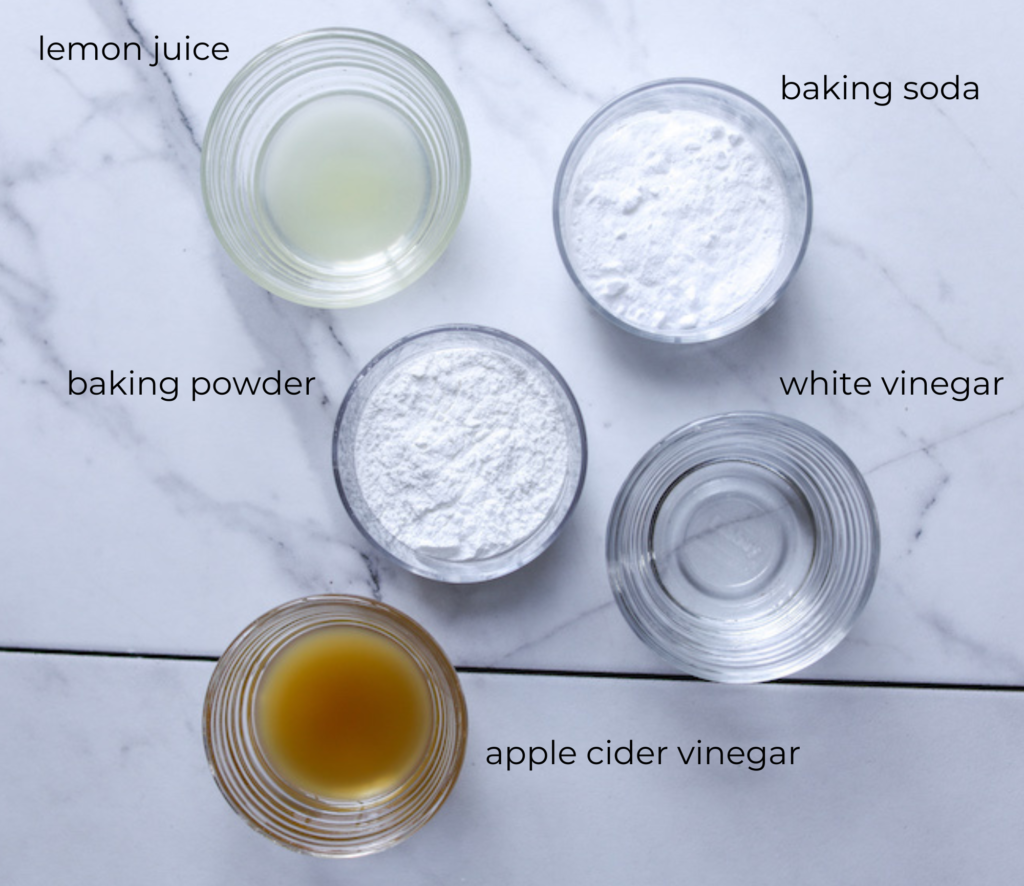
How and why to factor pH levels in to gluten-free vegan baking
Rise. Baking soda requires an acidic ingredient to activate its leavening abilities, which is why you will find additions such as apple cider vinegar, coconut yogurt, or lemon juice used alongside. It’s less necessary when baking powder is included, but because baking powder contains baking soda, it can’t hurt. Incorporating these acidic ingredients will help with rise. And since baking powder is a double-acting leavening agent, heat applied in the oven activates the leavening bubbles creating more height and thickness as a result.
Bind and elasticity. Gluten creates bind and elasticity in traditional baking. In gluten-free vegan recipes, you don’t want your baked goods to crumble. Knowing the pH levels of the various gluten-free flour blends and starches with which you are working can assist you achieve the result you are going for. For example, cassava flour is pretty alkaline (pH of 9.3), rice and oat flours are more neutral (a pH close to 6.5-7), where as nut flours are more acidic (a pH closer to 5). Xantham gum, which is an ingredient found in many gluten-free baking recipes, works better when conditions are acidic to neutral. When you take pH into consideration, and play around with different flour combinations based on where they fall on the pH scale, it can help improve the consistency and structure of your baked good.
Color, flavor, and taste. Think about a traditional chocolate chip cookie: soft, chewy, flavorful, and browned to perfection. This is an example of the Maillard reaction that occurs in the baking process. An alkaline environment increasingly activates the Maillard reaction, leading to that browning effect and enhanced flavor. Using baking soda, and considering the overall pH of your dough or batter, allows you to achieve these results. Additionally, offsetting or balancing the pH in your recipe can affect taste. The acids that help activate baking soda (vinegars or citrus juice for example) provide tangy and tart flavor profiles while balancing the sweetness (examples are lemon blueberry muffins or orange cranberry bread). You might also want to choose an acid that would complement a recipe best (using apple cider vinegar in apple donuts rather than lemon juice for example). Along those lines, know that using too much baking soda can make your baked good have a metallic taste. A little goes a long way! You will rarely see more than a teaspoon of baking soda being used; recipes typically call for 1/4 to 1/2 teaspoon of baking soda.
Whether you like to follow others’ recipes for fun, or are a content creator who likes to customize her own, or simply think food science and chemistry is cool (or a combination of all three!) understanding the role of leavening agents and acids in gluten-free and plant-based baking will set you up for success in the kitchen. Happy baking!

